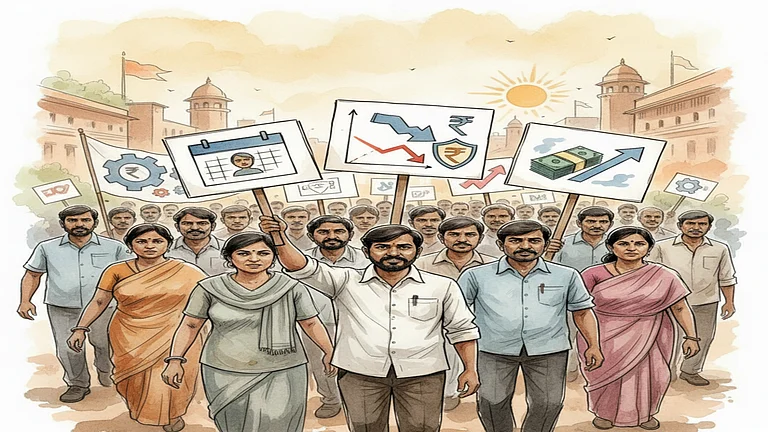
Summary of this article
Four new labour codes have been implemented, consolidating 29 labour laws to boost worker welfare
Mandatory appointment letters and timely wage payments introduced to ensure job security and financial stability
Fixed-term workers gain social security benefits, gratuity after one year, and increased protections
Women’s workplace participation enhanced with equal pay mandates and new safety and shift permissions
The government has recently announced and implemented four new labour codes (Code on Wages, 2019, Industrial Relations Code, 2020, Code on Social Security, 2020, and Occupational Safety, Health, and Working Conditions Code, 2020), by consolidating 29 existing labour laws into a simpler framework. The new codes are to ensure better wages, safety, and social security of workers across India.
However, these new labour codes are not just the consolidation of previous labour laws but a reform for the welfare of the workers. Among the changes, these codes ensure a minimum wage, timely payment, gratuity for fixed-term employees, and social security for workers, including the gig- and platform-workers, plantation workers, dock workers, and so on. In short, these reforms entail improved worker protection, universal social security, streamlined labour law compliance, and ultimately an Aatmanirbhar Bharat.
Here are the key changes.
Minimum Wage
The reforms extended the right to minimum wage payment to all workers, under the Code on Wages, 2019, which was previously restricted to only scheduled industries. Besides this, the government has set the National Floor Wage, a minimum wage that should be paid to the workers to ensure a decent standard of living.
Mandatory Appointment Letters
With the implementation of the reforms, all workers are now legally guaranteed a mandatory appointment letter. This written proof ensures transparency, job security, and fixed employment.
Timely Wages
One of the crucial reforms that has been introduced is the timely payment of wages. Employers are now mandated to pay the wages on time. The aim is to ensure financial stability, reduce work stress, and boost workers’ morale.
Free Annual Health Check-Up
To expand the health net, the reforms mandate employers to provide a free annual health check-up for all workers above the age of 40 years. Earlier, there was no legal requirement as such for employers.
Social Security Coverage For Gig- And Platform-Workers
The new codes formally define the ‘Gig work,’ ‘Platform work,’ and ‘Aggregators’. Under the Code on Social Security, 2020, all workers, including the gig- and platform workers, are now guaranteed social security coverage, such as the provident fund, Employees’ State Insurance Corporation (ESIC) benefits, and other social security benefits.
Aggregators now need to contribute 1-2 per cent of their annual turnover towards, with a cap at 5 per cent of the amount paid to gig- and platform workers. Moreover, these benefits, linked to the Aadhaar-linked Universal Account Number, will be fully portable across states.
Gratuity For Fixed-Term Employees (FTEs)
The new labour codes have significantly empowered the FTEs or contractual workers. They are now entitled to receive benefits equal to permanent workers. These include leave, medical benefits, and social security, among others. Gratuity is another benefit that is now available to FTEs just after one year of service, contrary to the previous five-year requirement.
Gender Equality
These codes prohibit gender discrimination, explicitly in the case of wages. It ensures equal pay for equal work.
Women Safety
Women are now permitted to work on night shifts and in all types of work, including underground mining and heavy machinery, subject to their consent. In addition to it, the codes extended the definition of family for female employees and include a provision of adding parents-in-law for dependent coverage.
How Would These New Codes Impact Workers?
Vinay Joy, Partner at Khaitan & Co., counts the positives while saying, “The definition of wage is now standardised across the codes, and this would increase the base for payments such as gratuity and statutory bonus, resulting in higher payments to employees. Further, with the prohibition on deploying contract labour in ‘core’ activities of an establishment, employers may need to bring presently outsourced core roles in-house, creating opportunities for more regular employment in the workforce.”
On the inclusion of gig and platform workers under the social security net, He adds, “Such workers are mainly hired as individual contractors and did not have access to such benefits prior to the social security code coming into force. Central and State rules on these aspects will benefit the entire gig and platform worker ecosystem as a result.”
But at the same time, Joy highlights the points that could work against the interests of workers.
“The threshold for prior government approval for retrenchment and closure has been raised from 100 workers to 300 workers, making it easier for establishments within those thresholds to reduce workforce or close establishments in many cases, as they do not need prior permission anymore. Further, under the new definition of “wages”, the base wages for retrenchment compensation and leave encashment may decrease,” says Joy.
While the changes are vast, focused on including more workers under social security and ensuring their financial stability, gratuity for FTEs, etc., are beneficial, but as Joy pointed out, in the fast-paced gig economy, retrenchments are also fast and cannot be ignored when it comes to the labour codes



















